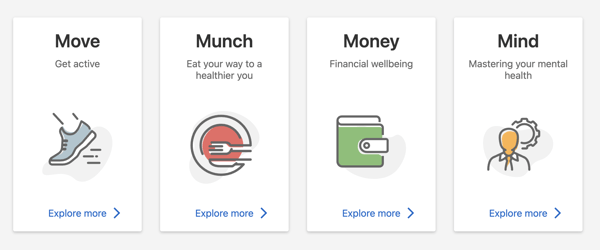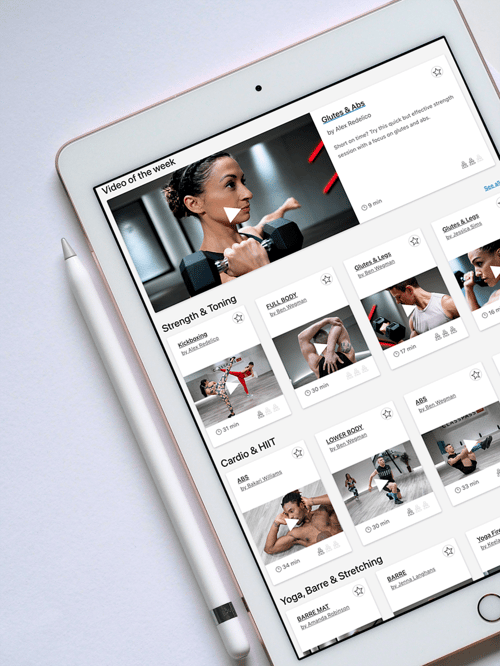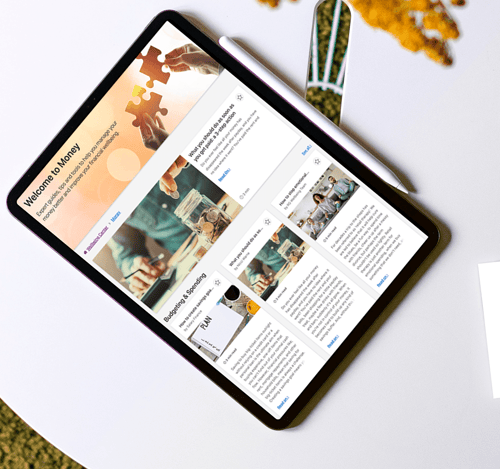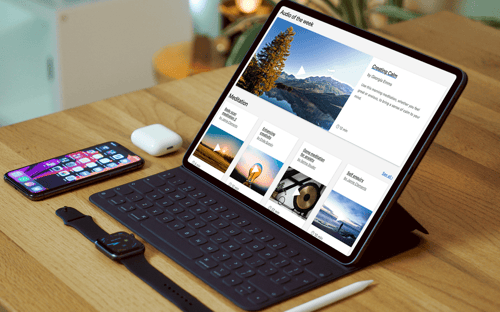Making employee wellbeing a core business priority is a win-win approach.
Employees feel more supported, more engaged and ultimately happier. And employers are consequently rewarded with numerous measurable benefits, including higher levels of productivity and profitability, fewer safety incidents and lower employee turnover.
As our Chief People Officer, Nebel Crowhurst, put it in her 2024 HR predictions:
Organizations that want to be successful need to put wellbeing at the heart of their workplace culture.
And the research backs this up. A Gallup study of more than 15,000 U.S employees found those who strongly agree that their organization cares about their overall wellbeing are:
- 3 times more likely to be engaged at work
- 69% less likely to actively search for a new job
- 5 times more likely to strongly advocate for their company as a place to work
- 71% less likely to report experiencing burnout
The case for prioritizing employee wellbeing is pretty convincing, but it can be hard to know how to create an effective wellbeing strategy. A good first step is for HR and employee engagement leaders to build an understanding of the 4 pillars of employee wellbeing – exercise, nutrition, financial advice and mental health.
Our comprehensive wellbeing program was built around these 4 key pillars, categorizing resources and content under ‘Move’, ‘Munch’, ‘Money’ and ‘Mind’. Let’s explore each of these categories in a little more detail to get you started with building your program!

1. Move
 We all know intuitively that exercise is good for our overall wellbeing. But it's not always obvious to know how to connect it to work – particularly when more than 80% of jobs in the U.S mostly involve sedentary activities.
We all know intuitively that exercise is good for our overall wellbeing. But it's not always obvious to know how to connect it to work – particularly when more than 80% of jobs in the U.S mostly involve sedentary activities.
Exercise is an important pillar of employee health and wellbeing. In addition to the more obvious physical health benefits, studies show that physical activity also affects mental health positively by enhancing mood and self-esteem while decreasing stress.
The good news is that there are loads of things that employers can do to encourage their employees to be more physically active.
Offering discounted gym memberships as part of your benefits package, providing access to a platform such as ClassPass for online fitness videos and encouraging teams to take part in activity challenges through a platform like RG’s wellness app are all great ways to prioritize employee wellbeing by promoting physical activity.
2. Munch
 Encouraging employees to eat a healthy and nutritious diet has many positive workplace benefits, including an increase in productivity due to improved cognitive function and decreased fatigue among employees.
Encouraging employees to eat a healthy and nutritious diet has many positive workplace benefits, including an increase in productivity due to improved cognitive function and decreased fatigue among employees.
One systematic review of workplace nutrition interventions found that promoting healthy eating at work can lead to significant changes in absenteeism, work performance and productivity. And if that’s not convincing enough, data from the Centers for Disease Control and Prevention shows that 42% of adults in the U.S live with obesity linked to poor nutrition, putting them at risk of heart disease, type 2 diabetes and some cancers.
One of the ways we help our clients’ employees to prioritize a healthy diet is by providing access to hundreds of nutritious recipes, articles and videos in the ‘Munch’ section of our Wellbeing Center.
On top of nutrition tips and healthy recipes, why not organize a ‘healthy bake-off’ competition, or set up a space within your intranet for employees to share nutritious recipe ideas?
3. Money
 With money continuing to be a significant cause of stress for employees in the U.S, financial wellbeing should be a key pillar of any corporate wellbeing program. One study found that 52% of Americans believe money has a negative impact on their mental health, and 82% say that feelings of stress and anxiety are caused by economic factors.
With money continuing to be a significant cause of stress for employees in the U.S, financial wellbeing should be a key pillar of any corporate wellbeing program. One study found that 52% of Americans believe money has a negative impact on their mental health, and 82% say that feelings of stress and anxiety are caused by economic factors.
Giving employees the knowledge and confidence to manage their money and avoid financial troubles is a great way to support overall wellbeing and lower stress levels.
This can be achieved by providing useful unbiased information, sharing actionable advice and offering 1:1 financial coaching. You could also have your internal finance team run workshops on topics like how a 401k works or retirement planning.
4. Mind
 According to the American Psychological Association, nearly a quarter of all U.S employees feel their work negatively impacts their mental health. And the World Health Organization agrees that while work can be a protective factor for mental health, it can also contribute to worsening mental health.
According to the American Psychological Association, nearly a quarter of all U.S employees feel their work negatively impacts their mental health. And the World Health Organization agrees that while work can be a protective factor for mental health, it can also contribute to worsening mental health.
Organizations have a responsibility to keep their employees safe, both physically and emotionally.
Mental health should therefore be a core pillar of workplace wellbeing programs, which is why ‘Mind’ is one of the most important categories within our Wellbeing solution.
In addition to an Employee Assistance Program (EAP) that offers critical support during times of need, organizations can bolster employee mental health with mindfulness resources to help team members manage stress, sleep and more.
This kind of content helps employees to manage everyday stress and keep anxiety in check.
To learn more about how RG can help you improve your employees’ wellbeing in 2024, schedule a brief demo with one of our friendly employee engagement experts and get started on your journey to make your corner of the world a better place to work.

 Klara Owens
Klara Owens



